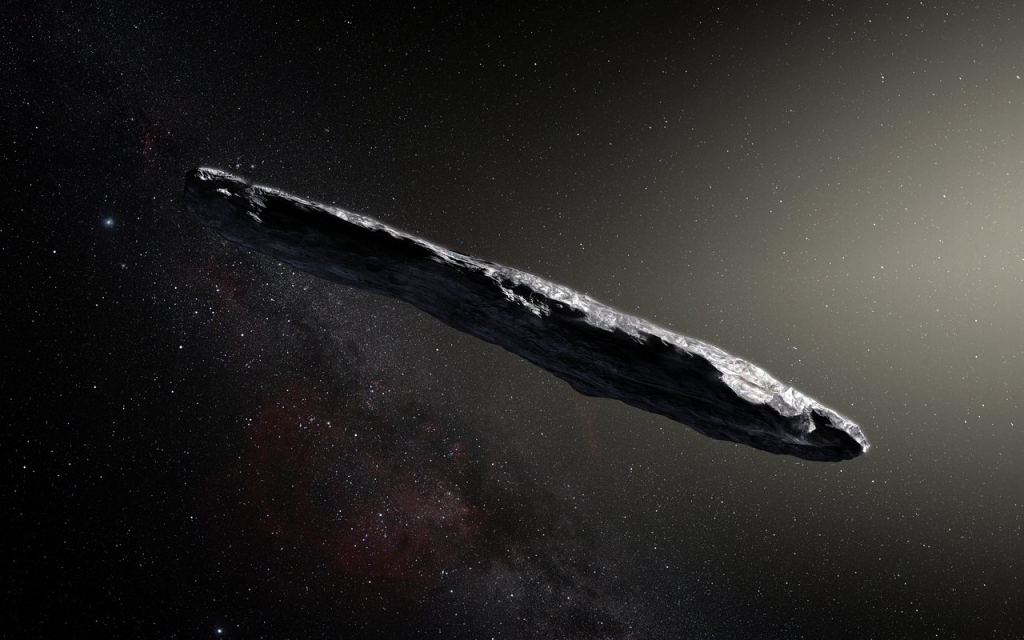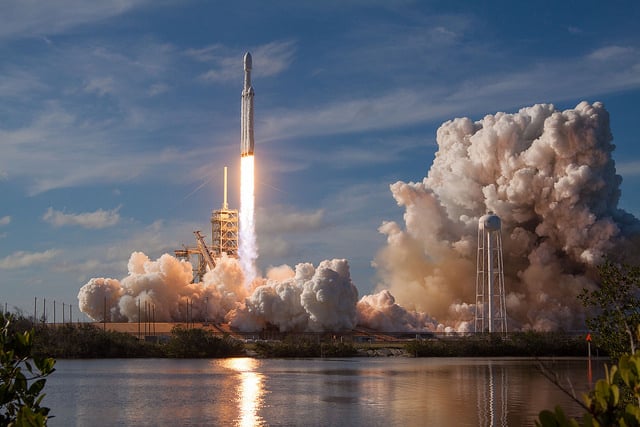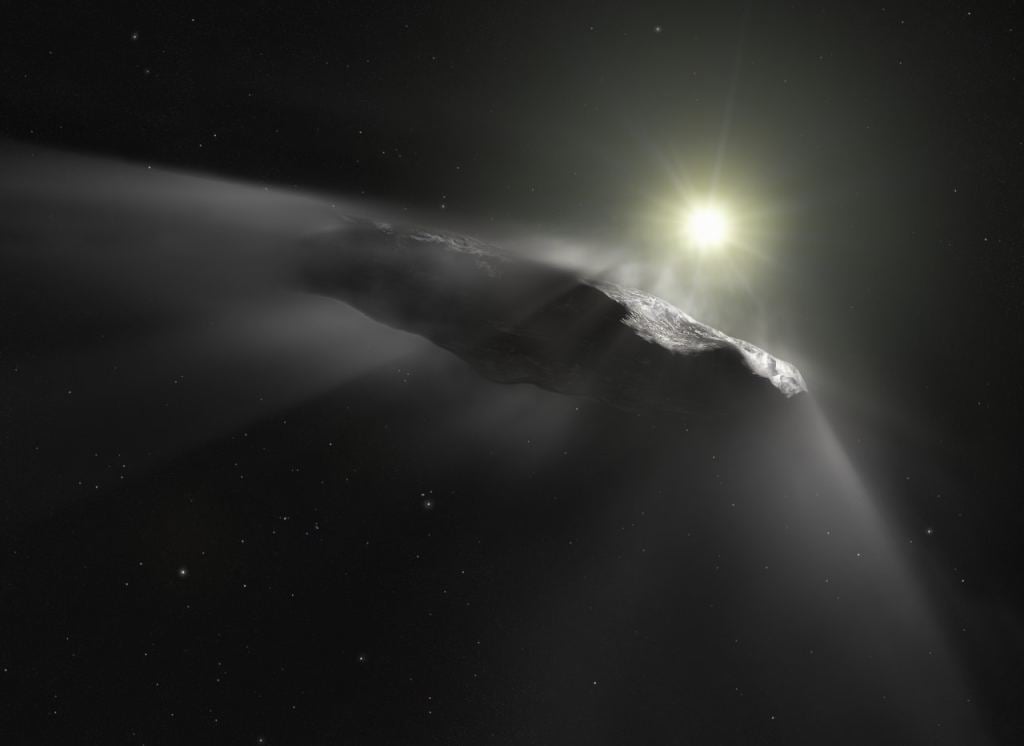When 'Oumuamua passed through our Solar System two years ago, it set off a flurry of excitement in the astronomical community. Here was the first-ever interstellar object thatbeobserved by human trackers, and the mysteries surrounding its true nature and composition led to some pretty interesting theories. There were even some proposals for a rapid mission that would be able to rendezvous with it.
And now that a second interstellar object - C/2019 Q4 (Borisov) - has been detected traveling through the Solar System, similar proposals are being made. One of them comes from a group of scientists from the Initiative for Interstellar Studies (i4is) in the UK. In a recent study, they assess the technical feasibility of sending a mission to this interstellar comet using existing technology, and found that there were a few options!
In many ways, C/2019 Q4 (Borisov) represents an opportunity to conduct the kinds of research that were not possible with 'Oumuamua. When that mystery object was first observed, it had already made its closest pass to the Sun, past Earth, and was on its way out of the Solar System. Nevertheless, what we were able to learn about 'Oumuamua led to the conclusion that it was an entirely new class of celestial object.
In addition to those who ventured that it was either a comet or an asteroid, there were also those who theorized that 'Oumuamua could be a fragment from a comet that exploded when passing close to our Sun, or even an extra-terrestrial solar sail. Another interesting find was the fact that similar objects likely pass through our Solar System on a regular basis (many of which stay).
For these reasons, a mission that could study such objects up close is very desirable. As Dr. Andreas M. Hein - the executive director of i4is's board of directors, the chairman of its Technical Research Committee, and one of the co-authors on the recent study - told Universe Today via email:
What's more, he claims, these objects have probably been travelling between star system for hundreds of thousands (or even millions) of years. As a result, they undoubtedly picked up material along the way or bear the marks of encounters with other objects or forces. In short, their composition and surface features can tell us a great deal about what is out there in the interstellar medium.
This is not the first time that i4is has proposed sending a spacecraft to rendezvous with an interstellar object. In 2017, Dr. Hein and several colleagues from i4is (who also co-authored this study) produced a paper titled " Project Lyra: Sending a Spacecraft to 1I/’Oumuamua (former A/2017 U1), the Interstellar Asteroid ", which was conducted with the help of the asteroid-prospecting company Asteroid Initiatives LLC.
The project was so-named because of 'Oumuamua's origins, which astronomers concluded came from the general direction of Vega - the brightest star in the northern constellation of Lyra. After taking into account the speed with which 'Oumuamua was leaving the Solar System at the time - 26 km/s (93,600 km/h; 58,160 mph) - they determined that any proposal would be a trade-off between three factors.
These included when a mission could launch, the velocity it could achieve, and the time it would take to rendezvous with the object. Under the circumstances, they felt that the best option was to wait for future technological breakthroughs - such as those being pursued by Breakthrough Starshot (a concept for a laser-driven interstellar solar sail).
These conclusions have proven very applicable, thanks to the detection of a second interstellar object passing through our Solar System in as many years. In their most recent study, the research team once again used Optimum Interplanetary Trajectory Software (OITS) - which was developed by team-member Adam Hibberd - to assess all available options for sending a spacecraft to rendezvous with an interstellar object.
These included the optimal launch vehicle (like NASA's Space Launch System (SLS) or SpaceX's Falcon Heavy) the optimal trajectory for the mission, and the best type of spacecraft. In the end, they determined that humanity has the capability of rendezvousing with an interstellar object using existing technology and came up with a mission architecture that could make that happen.
This mission would rely on a heavy-launch vehicle and could alternately employ a 2 ton (1.8 metric ton) or a 3 kg (6.6 lbs) CubeSat spacecraft. Depending on when it launched and what its preferred trajectory would be, it might also need to conduct a Jupiter flyby and Solar Oberth maneuver to catch up with C/2019 Q4 (Borisov). As Dr. Hein explained:
"Our results show that for both, 'Oumuamua and C/2019 Q4 (Borisov), we already have the technology to visit these objects. Regarding 'Oumuamua, we can launch a spacecraft towards it even beyond the year 2030. There is plenty of time to develop such a spacecraft. The case for C/2019 Q4 (Borisov) is a bit more tricky, as it is faster than 'Oumuamua. But even for this object, we could have sent a two-ton spacecraft to it with a Falcon Heavy, if we would have launched it in 2018."
"Later missions are also possible*, but require a bigger launcher. Future telescopes will be able to detect such objects much earlier and with adequate preparation, we can send a spacecraft on an encounter mission. So we have the technology to do this and with the discovery of C/2019 Q4 (Borisov), we also know that we probably have plenty of opportunities to fly to such an object."*
Once again, the presence of an interstellar object in our Solar System is a major source of excitement. In addition to all the opportunities to learn from them, C/2019 Q4 and 'Oumuamua are encouraging because of the implication their presence has. Not only do they confirm that objects from distant stars pass through our System pretty regularly; they also show that we are at a point where we can detect, track and study them.
But knowing that in the future, we will be able to study them up close is especially exciting! In fact, the ESA is currently working on a mission that could very be the one to rendezvous with a future interstellar object. It's known as the Comet Interceptor, a "fast-class" concept consisting of three spacecraft that will wait in space until a pristine comet appears, rapidly catch up with it!
"We imagine two types of research," Dr. Hein said. "First, remote-sensing, for example with a telescope taking pictures. Second, we can analyze material from the object directly by shooting an impactor into it and catching some of the particles from the dust plume which is generated with the main spacecraft. This would provide unique insights into the composition of the object."
As for what this research could reveal, Dr. Hein has some thoughts on that too: "I can only speculate but we might see evidence that organic molecules, the building blocks for life, actually travel between star systems and who knows, maybe life itself might actually spread between stars in our galaxy."
*Further Reading: arXiv*
 Universe Today
Universe Today




